A lareira geralmente é colocada na sala de estar. Onde mais admirar o fogo, se não no cômodo para descansar e receber convidados. Não é possível usá-la como a principal fonte de calor em todos os projetos, mas como um complemento, no outono e na primavera, ela é muito confortável. Ajudará a lareira em climas frios especialmente severos, quando a potência de aquecimento principal for insuficiente. A colocação de uma lareira simples pode ser feita com suas próprias mãos. Não é fácil, mas é possível.
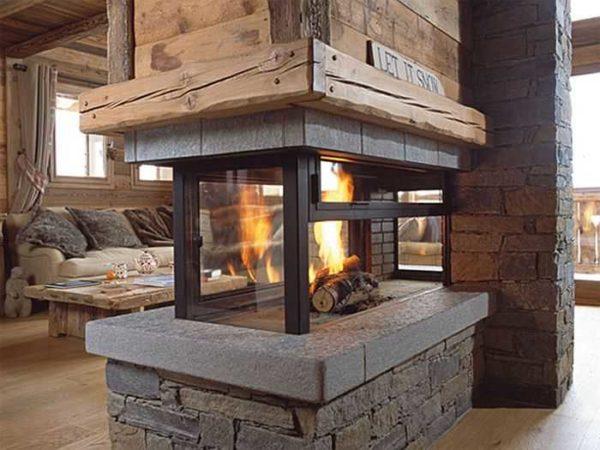
Embora a construção de uma lareira exija muito menos tijolos, é muito importante dispor todos os elementos corretamente. Devido a erros de construção, a lareira pode funcionar de forma ineficiente ou não funcionar de forma alguma. Além da função de aquecimento, a lareira desempenha, em muitos aspectos, funções estéticas, pois muitas vezes é escolhida por sua aparência, sem se esquecer das características técnicas.
Conteúdo do artigo
Lareiras holandesas
Esse dispositivo de aquecimento, embora tenha uma fornalha de grande formato tradicional para lareiras, é de fato um fogão - ele tem uma chaminé de várias voltas. Portanto, é uma estrutura maciça, pesada e de difícil execução. Ele tem apenas duas diferenças importantes em relação a um fogão: o tamanho do portal da fornalha e a ausência de um tubo de sopro. Se você souber como dobrar o forno holandês, fazendo ajustes simples, poderá transformá-lo em uma lareira. Além disso, se a casa tiver um forno holandês antigo, mesmo que precise de grandes reparos, ele pode ser facilmente transformado em uma lareira. É necessário apenas desmontar a parte frontal do forno, inserir uma fornalha de metal pronta de tamanho adequado, conectá-la às chaminés e decorá-la.
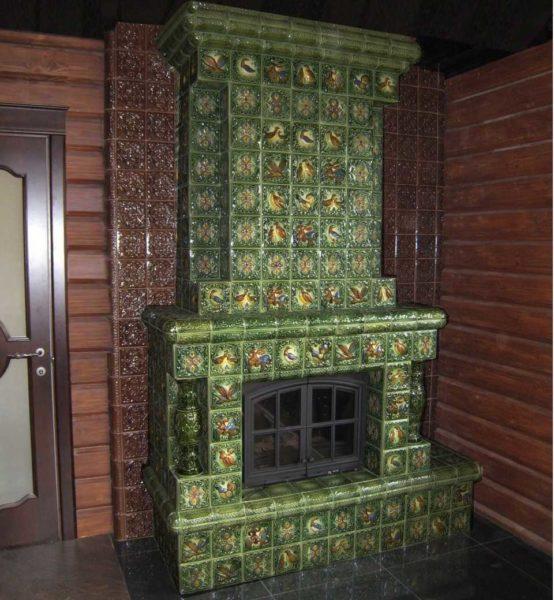
Esse é o tipo de unidade com uma fornalha aberta, que pode ser usada como o principal dispositivo de aquecimento. Os holandeses há muito tempo são obrigados a economizar combustível e não permitem que o calor desça pela chaminé.
Aberto ou Alpino (suíço).
Esse tipo de lareira só se tornou popular recentemente. Na verdade, ela também não é uma lareira em sua forma mais pura, mas por um motivo diferente. Em vez disso, é simplesmente uma lareira aberta ou semifechada, sobre a qual é feito um exaustor que passa para a chaminé.
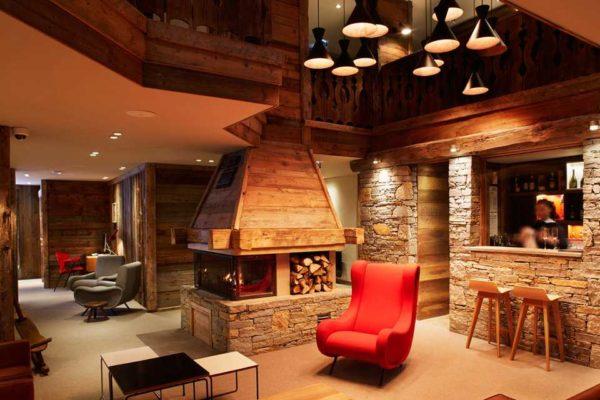
Ele se encaixa perfeitamente no interior do estilo chalé, pois foi lá que ele chegou até nós. O dispositivo, em geral, não é complicado, mas não é muito eficaz em termos de aquecimento. Mas é muito decorativo.
A opção que você vê na foto acima é feita no estilo rústico - com pedra natural tratada. Esse trabalho custa muito dinheiro: é preciso ajustar e cortar a pedra dura, o que exige um alto nível de habilidade.
Inglês clássico

A lareira tradicional é como a imaginamos. Uma lareira de portal aberto, na qual a madeira está queimando. E seu acabamento pode ser qualquer um, tanto extravagante, sob os interiores apropriados, quanto contido, que se encaixa na alta tecnologia e no minimalismo.
Com tudo o que é necessário, ao que parece, e não muito espaço, para a fabricação de uma lareira clássica, juntamente com o comprimento médio da chaminé, serão necessárias cerca de 800 peças de tijolos. A massa total dessa estrutura é da ordem de uma tonelada. Sob a menor lareira clássica, é necessária uma fundação sólida separada, como a que foi disposta para o forno - na mesma profundidade que a fundação da casa, e em tamanho deve ser maior em todos os lados em pelo menos 15 cm. Ela deve estar nivelada com o piso.
Dispositivo e como ele funciona
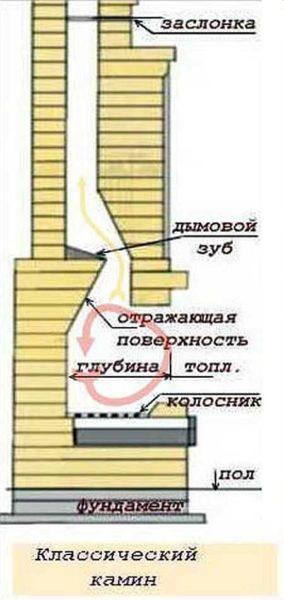
Se você olhar a foto, parece que não há nada complicado: uma caixa com um cano e pronto. Mas o que parece simples, na verdade, está longe de ser simples. Em primeiro lugar, há um dente de fumaça na parte superior da fornalha. E não se trata de uma saliência qualquer, mas de uma superfície refletora. Ele estreita a seção transversal do tubo, torcendo a chama dentro da fornalha.
Em segundo lugar, a parte inferior da fornalha não tem um orifício de sopro e a parede frontal é feita com uma inclinação para dentro. Esses dois componentes possibilitam que a chama gire por um longo período na fornalha, liberando o máximo de calor possível.
Em terceiro lugar, há um amortecedor no tubo, que regula de forma eficaz e muito importante a intensidade da combustão. Seguro - porque uma lareira construída adequadamente não forma, em hipótese alguma, monóxido de carbono em quantidades perigosas. Afinal, ele é formado quando há falta de oxigênio e, quando o portal de uma lareira clássica está aberto, sempre há ar e oxigênio suficientes.
Outro ponto da abertura da lareira é que nela, como em uma porta deslizante, é feito um orifício na área igual a 10% da seção transversal da chaminé. Essa abertura é necessária para uma corrente de ar mínima, que, de qualquer forma, não permitirá que a chama e a fumaça "caiam" da fornalha. Mesmo quando o damper está fechado, o fogo gira no interior e a fumaça vai para a chaminé.
Esse design permite o uso eficiente do calor, mesmo ao queimar combustível de alto teor calórico. A chama de longa rotação maximiza o aquecimento das paredes do forno e aquece perfeitamente o ambiente.
Se falarmos sobre a possibilidade de aquecer água, não é possível colocar nada na fornalha: toda a dinâmica é violada. Mas acima do dente, no tubo, você pode colocar um trocador de calor. Outra questão é que as temperaturas lá não são tão altas e aquecer água para aquecimento não funcionará, mas para água quente sanitária em um volume pequeno (caldeira de armazenamento), o calor será suficiente.
Nas primeiras lareiras inglesas, a parte de baixo era sem grelhas, com uma inclinação para fora. Nesse caso, a menor imprecisão na execução levava ao fato de que a chama começava a girar para o outro lado. Ao mesmo tempo, os carvões podiam voar para fora da fornalha, o que não era nada bom. Por isso, na Idade Média, começaram a fazer pequenas grelhas e um soprador inferior, que era aberto somente durante o aquecimento. Quando a madeira está queimando, o soprador inferior é fechado, o que dá impulso à formação de um redemoinho de fogo na fornalha.
As lareiras inglesas modernas são fabricadas com uma lareira cega e uma grelha. Ao acender os modelos cegos, os líquidos de ignição são usados para acender o fogo. Eles próprios dão impulso suficiente para a formação de um vórtice.
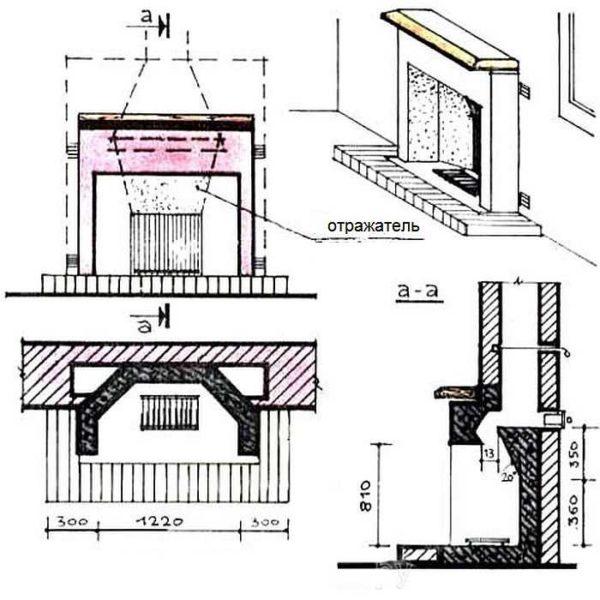
Layout de uma lareira clássica
As lareiras tradicionais inglesas diferem construtivamente umas das outras pelo formato do dente de fumaça. Para sua reprodução precisa, apenas "mãos direitas" não são suficientes. Isso requer experiência e muita experiência. Mas há modelos que não são tão críticos quanto a esse detalhe. Essa lareira pode ser dobrada com suas próprias mãos, se você souber como manusear um mestre e um nível.

Nessa versão, a grelha é pequena e está localizada na extremidade da fornalha. Isso possibilitou que o dente não ficasse com a ponta e o tornasse comum, escalonado. Mas nessa lareira é impossível fechar o ventilador inferior durante o aquecimento. O fogo está "girando" precisamente devido ao fluxo de ar na parte traseira da fornalha.
Lareira Rumford
Uma das variedades do clássico é chamada de lareira Rumford (Rumford). O princípio de funcionamento é o mesmo, mas não fornece um dente de fumaça, mas um pescoço estreito da chaminé, cuja forma repete um dos ramos da hipérbole.
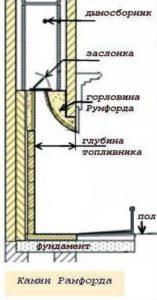
Estruturalmente, é mais simples e requer menos espaço - a fornalha pode ser menos profunda. Todos os problemas estão no fato de que o pescoço deve ser feito com uma precisão muito alta. O desvio de apenas 5% da forma necessária leva à inoperabilidade. Essa é a principal dificuldade, portanto, não é aconselhável fazer essa lareira com suas próprias mãos.
Com um forno de fábrica
Se existem fogões de metal, por que não existem lareiras de metal? E elas existem. As fornalhas das lareiras são feitas de ligas complexas - silicone, compostas e especiais. Os processos que ocorrem na fornalha da lareira são modelados por programas especiais, de modo que a eficiência desses dispositivos de aquecimento é grande e a complexidade da instalação é média. Outra vantagem é que você pode conectar a chaminé de metal comum.
Outro ponto interessante: o peso da fornalha é de cerca de 100 kg. Se o acabamento pesar um pouco, você pode colocar essa lareira em uma laje de concreto armado. Se quiser uma pedra natural, você terá que fazer uma fundação para a lareira.
Ao instalar uma lareira com uma fornalha, é necessário atender a vários requisitos:
- as paredes próximas às quais o aquecedor será montado devem ser cobertas com materiais incombustíveis e isolamento térmico com uma camada reflexiva;
- a distância entre o aquecedor e a parede deve ser de pelo menos 10 cm e a distância entre o aquecedor e o isolamento deve ser de pelo menos 5 cm;
- o cinzeiro deve facilitar a limpeza e sua entrada deve estar o mais próximo possível da fornalha;
- a chaminé deve corresponder aos parâmetros da fornalha;
- as juntas da chaminé devem ser vedadas com selante de alta temperatura;
- o espaço entre a parede da fornalha e o revestimento deve ser de pelo menos 1 cm;
O princípio e o procedimento para instalar uma fornalha de lareira, veja o vídeo.
Obtenção de autorização
Um pouco sobre se a instalação de uma lareira deve ser encomendada a uma empresa ou feita por suas próprias mãos. O problema aqui não está apenas no aspecto técnico da questão. Normalmente, as dificuldades surgem muito antes disso - mesmo durante a elaboração de documentos. Os bombeiros não gostam de dar permissão para lareiras. E as licenças são necessárias ao instalar uma lareira em qualquer local residencial. A dificuldade é que não existe uma estrutura legal que determine as regras de instalação. Para fogões, existe esse documento, mas para lareiras, não. Mas há uma frase no SNiP 2.04.05-91 (sobre o dispositivo de aquecimento e fogões de cozinha) que proíbe em qualquer local residencial dispositivos de aquecimento com uma fornalha aberta. Desse ponto de vista, você terá sorte se planejar fazer uma lareira na dacha, localizada em um assentamento de dacha - ela não é considerada uma residência.
Como costuma acontecer, há outro documento (MGSN 3.01-96) que, em Moscou, permite a instalação de lareiras nos andares superiores, se o proprietário for um deles. Portanto, na capital, há uma chance de obter permissão, embora não todas.
Há uma brecha para os moradores das antigas casas de tijolos stalinka e Khrushchevok, nas quais, além dos dutos de ventilação em cada apartamento, há também chaminés. Na mesma categoria estão as casas de construção moderna, que também têm canais de chaminé. Em todos esses edifícios, é permitido colocar equipamentos de aquecimento na chama. Em geral, um forno está implícito, mas esse fato não é prescrito em nenhum lugar.
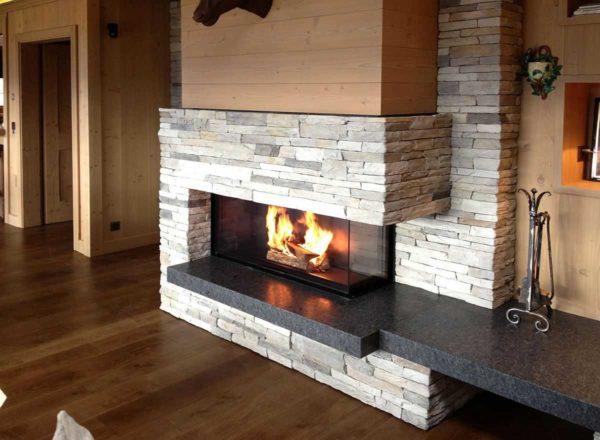
"Empurrar" a permissão pode ser, elaborando documentos de uma remodelação complexa com a transferência de dispositivos de aquecimento, por exemplo, a transferência de paredes, divisórias, associação com uma varanda ou loggia. Nos documentos, não escreva sobre os registros ou baterias de aquecimento central. Essa é uma formulação geral - dispositivos de aquecimento. No mesmo documento, você escreve que vai colocar o aquecedor na chama, anexando o projeto feito na organização do projeto. Nesse caso, os documentos caseiros não são aprovados. Há uma chance. Mas, em geral, os proprietários de casas e apartamentos vão correr atrás por muito tempo. E não tente argumentar, caso contrário você nunca obterá permissão. Refaça tudo o que eles exigirem. Não há outra maneira. Os proprietários de casas terão um pouco mais de facilidade. A lógica é clara: se houver problemas, você se queimará. Com os proprietários de apartamentos, a conversa é dura, mas você ainda pode obter permissão.
Se não quiser se preocupar com tudo isso, você pode solicitar a instalação da mesma lareira com uma fornalha em uma organização especializada. Como regra geral, eles prestam serviços para a execução da documentação. Como eles já trilharam caminhos, as chances são muito maiores. Além disso, ao aceitar seu aquecedor, poderá ser exigido (e provavelmente será exigido) certificados para todos os materiais, inclusive parafusos, roscas e ferragens do forno. Também é preciso estar ciente disso e ter em mente. E com essa tarefa, a compra de materiais se torna uma missão difícil.
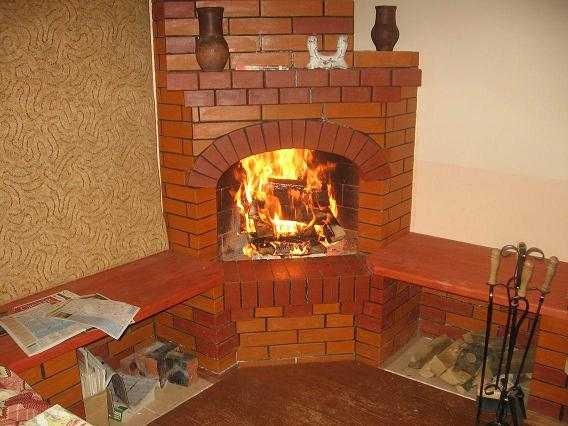
Lareira de canto - poryadovka e vídeo
Muitas vezes, as lareiras são feitas no canto. Isso é conveniente e prático: assim, ela ocupa a área mais difícil de decorar e serve como uma excelente decoração. Ao escolher um local sob a lareira, leve em consideração uma nuance como a altura do cano. Ao instalar a lareira, quase metade do material e do tempo é gasto na formação do cano. Por um lado, um cano alto - isso é bom - haverá uma boa corrente de ar. Por outro lado, os custos são altos. Para reduzi-los, a lareira pode ser colocada no canto onde está localizada a inclinação do telhado, e não em sua cumeeira. A altura da chaminé ainda deve ser suficiente para garantir a corrente de ar, e os custos serão menores.
Como fazer uma tela de proteção
Se a lareira for instalada em uma casa de madeira, as paredes precisam ser protegidas. O ideal é que seja assim:
- as paredes de madeira são revestidas com isolamento térmico (pode ser um papelão feito de lã de basalto com uma temperatura operacional de até 800°C e uma espessura de 1,5 a 2 cm);
- Fixe uma tela metálica sobre ela em isoladores de cerâmica com altura de 3 cm ou mais.
As paredes da lareira podem ficar a uma distância de 5 a 7 cm da tela. O tamanho da chapa metálica é 15 a 20 cm maior do que as dimensões da fornalha. Esse sistema de várias camadas evitará o aquecimento das paredes de madeira a temperaturas significativas.
Materiais, preparação, comentários
Essa lareira tem dimensões de 890*890*1610 mm (excluindo o tubo). Para sua fabricação, serão necessários:
- tijolo de forno vermelho 356 unidades (sem o tubo);
- tijolo à prova de fogo SHA-8 - 55 pçs;
- parafuso de combustão 250*130 mm;
- ângulo de aço com espessura de parede de 5 mm: 50*600 mm - 1 peça; 50*800 mm - 2 peças;
- chapa de aço com espessura de 3 mm 400*600 mm.
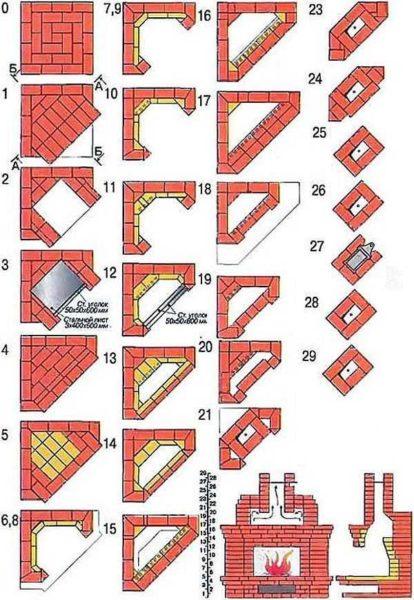
O layout acima é um dos tipos de lareira clássica para instalação em um canto. O esquema é bastante simples, mas nele é necessário aparar um grande número de tijolos. Para instalar essa lareira de tijolos, você definitivamente precisará de um bom cinzel e de um grande número de discos de pedra.
Ao formar o dente na fornalha (fileiras 10-13), os tijolos refratários de argila refratária são aparados. A borda superior do tijolo de cada fileira subsequente deve sobressair 30 mm em relação à fileira anterior. Essa borda é cortada de modo que fique inclinada e plana. Como resultado da colocação de todas as 4 fileiras formando o dente, a superfície deve ser plana e lisa. Ela "torcerá" a chama e refletirá o calor no cômodo, portanto, nesse momento, preste a máxima atenção.
Instruções suficientemente detalhadas para a instalação dessa lareira são fornecidas no vídeo.
Condições e materiais de assentamento
O início do assentamento da lareira com suas próprias mãos deve ser no período de outono-primavera, quando a temperatura fica entre 15 e 20 °C. Em outras condições, é difícil trabalhar e requer uma sólida experiência.
O tijolo deve ser de forno, vermelho, de corpo inteiro. Os tijolos de face e lisos não são adequados - eles não suportarão as flutuações de temperatura e se desfarão. Ao escolher um tijolo para forno, preste atenção na geometria e na cor. O "ferro" queimado não é adequado para nós, assim como os tijolos inchados e quebrados. Somente tijolos uniformes, da mesma cor, que emitam um som claro ao serem tocados.
A alvenaria é feita com argamassa de argila e areia. A argila é de construção comprada, assim como a areia é de rio, não de pedreira. A argila embebida em um estado pastoso é misturada com areia em uma proporção de 1:3 e é adicionada água para obter uma solução de plasticidade média. Não se esqueça de verificar a gordura da argamassa: pegue a argamassa em uma espátula e incline-a. A argamassa deve cair, deixando uma camada de areia que não é muito grossa. A argamassa deve cair, deixando uma camada de 1,5 a 3 mm sobre o metal. Se a camada for mais fina e o metal estiver visível, adicione argila; se o resíduo for grumoso e espesso, adicione areia e um pouco de água. Como resultado, você deverá obter uma argamassa com as condições especificadas.
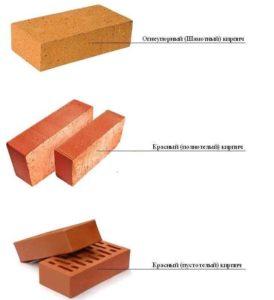
Ela pode ser misturada de uma só vez em todo o volume. À noite, o recipiente com a solução é coberto com um pano de saco úmido e, antes do trabalho, é agitado várias vezes.
Ao colocar a espessura das juntas, 6-13 mm. Idealmente - 8-10 mm. Se a lareira for colocada com suas próprias mãos pela primeira vez, use constantemente o nível e o fio de prumo. Verifique cada linha e até mesmo cada pedra. Lareiras - dispositivos altos e estreitos com um alto centro de gravidade. Essas estruturas não perdoam nem mesmo o menor desvio. Portanto, o nível deve ser de boa qualidade, de preferência se você tiver um construtor de planos calibrado (nível a laser).
Secagem e estufagem
A lareira pronta deve secar por pelo menos 20 dias, em um ambiente bem ventilado. Você pode criar uma corrente de ar, mas as paredes não devem ficar expostas à luz do sol. Para fazer sombra nas janelas e portas, você pode pendurar lençóis ou cobrir as aberturas com gaze.
Após três semanas de secagem, é possível realizar a queima. É usado combustível de queima lenta (carvão de semente de carvão, carvão de ferreiro). Se o forno tiver sido seco em boas condições, derreta, adicione o combustível em pequenas porções e deixe-o aquecer por algum tempo. Após três dias, ele poderá ser usado "ao máximo". Se as condições não tiverem sido "muito boas", comece com 3/4 da guia, levando-a gradualmente ao máximo ao longo de vários dias.

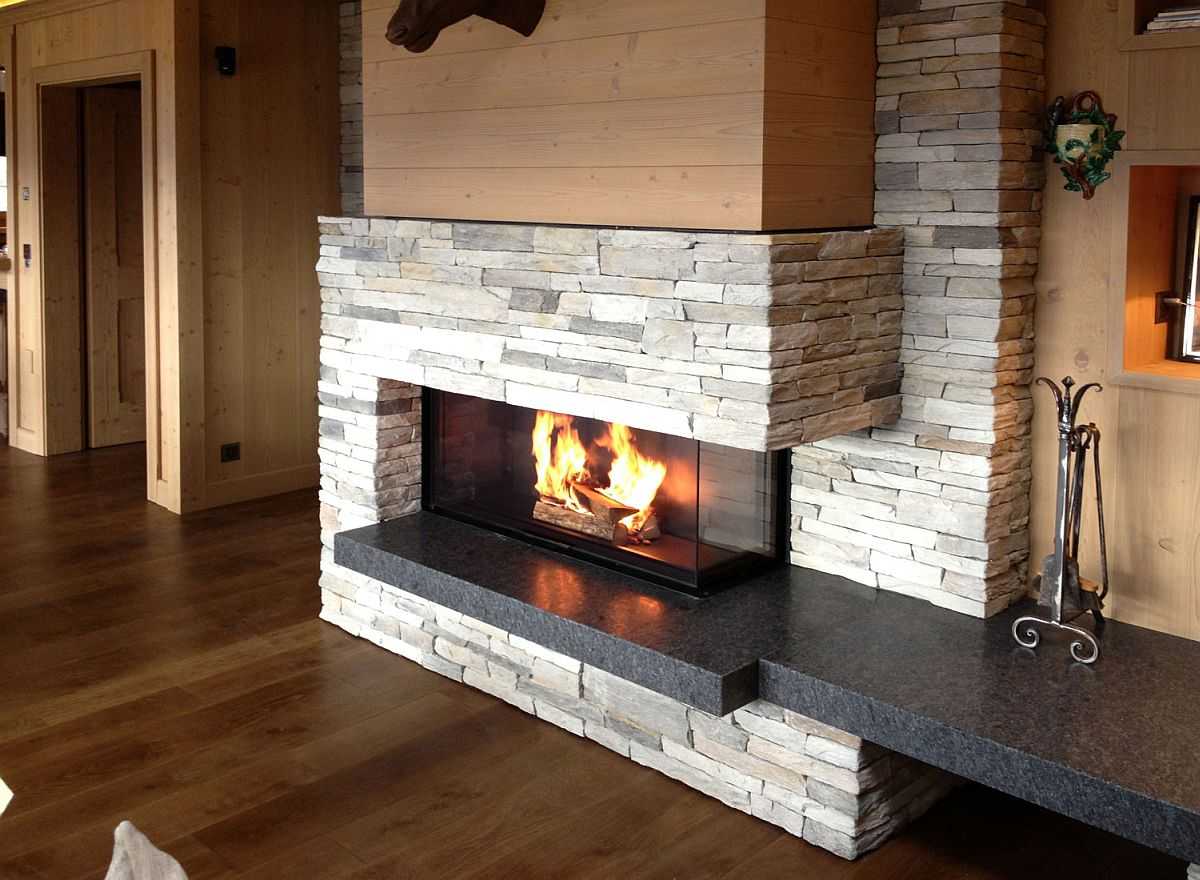
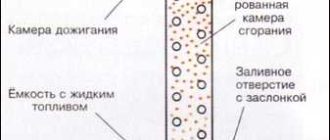
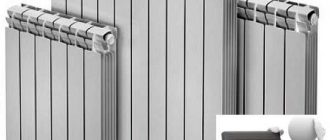
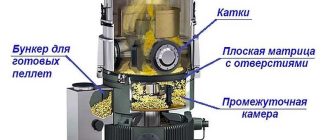
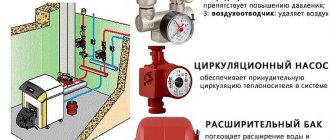
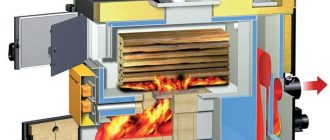
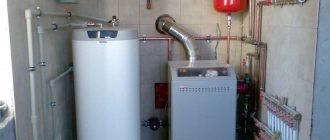
Lembro-me de quando tentei construir uma lareira em meu quintal. Foi um projeto divertido, mas definitivamente aprendi a importância de escolher os materiais certos e planejar com antecedência. No entanto, nada supera uma lareira aconchegante em uma noite fria! Só é preciso ter certeza de que ela é segura!
Estou totalmente de acordo com isso! Uma vez tentei fazer um forno de pizza. Achei que seria fácil, mas escolhi os tijolos errados e acabei tendo um fracasso. O planejamento é fundamental! Agora eu me limito às fogueiras - muito menos estresse e ainda assim aconchegante!